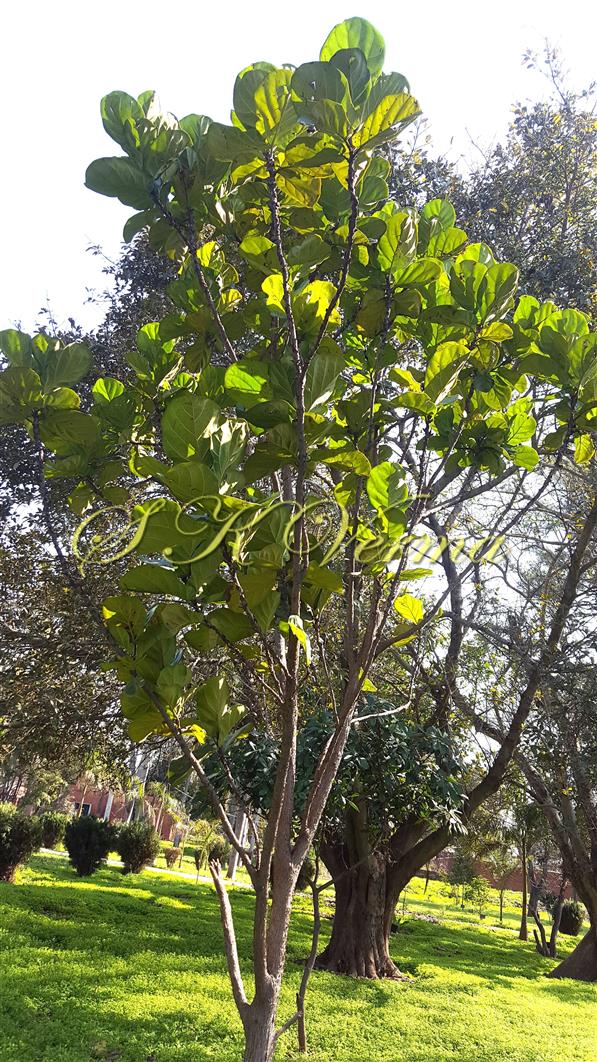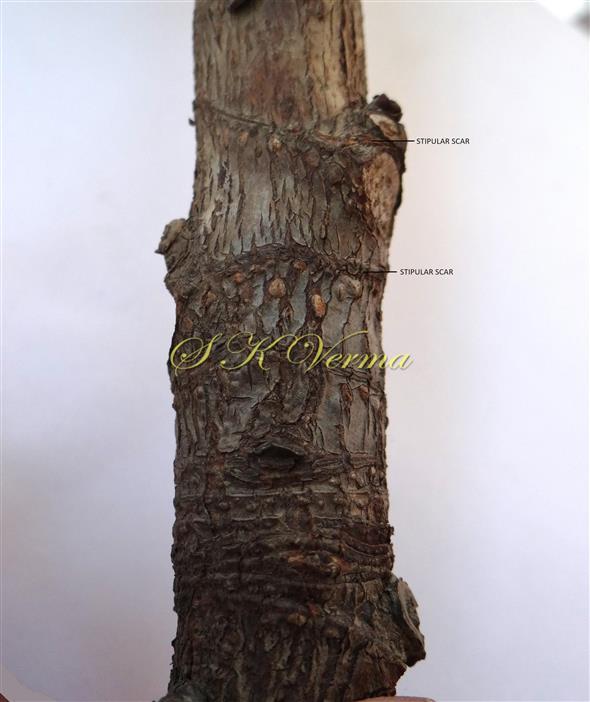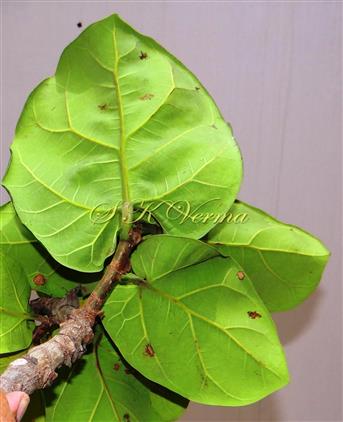Ficus lyrata
Ficus lyrata
Warb., Bot. Jahrb. 20: 172. 1894; Hutchinson in Thiselton- Dyer et al., Fl. Trop. Afr. 6(2): 142. 1916; Ghafoor, Fl. Pak. @ eFloras.org. p. 18; F. pandurate Sander, Gard. Chron., ser. 3, 33: 245. 1903.
A large tree, up to 12 m tall with very minutely puberulous to glabrous young shoots. Leaves alternate, petiole 2-5 cm long, stout, adaxially grooved, glabrous; leaf blade thick, fiddle-shaped (at least young leaves), 15-30 cm x12-20 cm, 3-5-nerved at base, base cordate, margin sinuate-entire, almost truncate and very shortly acuminate at apex, glabrous, 2-4 lateral nerves on each side of midvein, bulging beneath, intercostals present. Stipules paired, 3-5 cm long, narrowly triangular lanceolate, acuminate, glabrous, persistent.
Hypanthodia sessile, in axillary pairs, globose, 2.5-4.5 cm in diameter, finely puberulous, subtended by 3 triangular, appressed basal bracts, apical orifice somewhat depressed, +/- 2-lipped, closed by lanceolate inwardly directed bracts. Male flowers: Sepals 2-3, ovate- lanceolate. Stamen solitary with ovoid anther. Female flowers: Sepals 3, ovate, obtuse. Style short with papillate stigma. (Hypanthodia not observed; description as per Ghafoor, Fl. Pak. @ eFloras.org. p. 18)
Common Names: Fiddle Leaf Fig



-DSC06508.jpg)
-DSC06801.jpg)
-DSC06522.jpg)
-DSC06525.jpg)




-DSC06508.jpg)
-DSC06801.jpg)
-DSC06522.jpg)
-DSC06525.jpg)